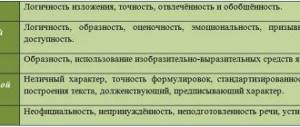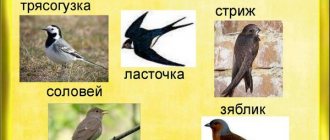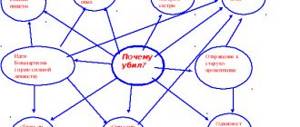Self-analysis of the literary reading lesson “Two Frogs”
Olga Tutukova
Self-analysis of the literary reading lesson “Two Frogs”
SELF-ANALYSIS OF THE LESSON.
Lesson topic : “L. Panteleev “Two frogs ”
Educational complex
“Primary school of the 21st century”
This
lesson is discussed in the lessons : About children and for children When preparing and conducting the lesson, I set myself the following tasks:
Goals: developing the reading competence of students, promoting self-awareness as a literate reader capable of creative activity ; development of the ability to argue for one’s activities, express one’s attitude towards characters, events, and the language of the work.
Metasubject.
When constructing the lesson, attention was paid to the formation of students’ UUD (universal learning activities)
.
(cognitive UUD)
find the necessary information to complete educational tasks;
construct a speech utterance orally;
teach the basics of semantic reading , highlight essential information.
(communicative UUD)
listen and engage in dialogue, form your own opinion and position;
participate in collective discussion;
build productive interaction and cooperation with classmates and the teacher.
(regulatory UUD)
accept and save the learning task;
highlight the necessary information from the text;
evaluate the correctness of actions and make the necessary adjustments to execution.
(personal UUD)
to form a motivational basis for educational activities, educational and cognitive interest in new educational material;
development of ethical feelings as regulators of moral behavior;
develop the ability for self-assessment based on the criterion of success in educational activities.
The student’s goal: I will learn to express my attitude to what I read, create a model-description, and a model of the cover.
This lesson is an explanation of new material.
At the first stage of activation, we form personal UUD-motivation for learning and purposeful cognitive activity.
From the first minutes there is “intrigue”
The second stage is updating knowledge. At the beginning
of the lesson , students learn not only to answer questions, but also to ask them correctly. At this stage, the following UUDs were formed:
Communicative UUDs:
• we develop the ability to listen and understand others;
Cognitive UUD:
• we develop the ability to generalize and classify according to characteristics;
Regulatory UUD:
• we develop the ability to evaluate educational actions in accordance with the assigned task;
Personal UUD:
• the ability to evaluate actions in accordance with a certain situation.
The students themselves were able to determine the topic of the lesson and set goals . (Regulatory UUD - we form the ability to predict upcoming work)
.
To maintain activity and attention, a presentation was included the lesson The heroes of the fairy tale taught the children, in a playful way, to consciously approach the reading and establish cause-and-effect relationships. To enhance the work, verification, mutual verification, and assessment analysis were included. (Regulatory UUD)
.
When working on a work, in addition to the formation of new knowledge, the following UUDs were formed:
Cognitive:
• we develop the ability to extract information from previously studied works. based on analysis and draw conclusions;
• we develop the ability to generalize.
Communicative: the ability to express your thoughts orally.
At the stage of applying knowledge to understand reading, work in pairs was proposed (Communicative UUD)
.
In this lesson, an activity-based teaching method was used, which was implemented in the following types of activities: educational and educational-research.
Any process of cognition begins with an impulse that encourages action. Motivation is needed to encourage the student to act. With this in mind, I carefully thought through each stage of the lesson , composed assignments, selected questions, and used various techniques to activate students.
At all stages of the lesson , the students were involved in active mental and practical activities of a research nature; the children had to not only use existing knowledge, but also find a new way to perform an action already known to them.
The stages of the lesson were closely interconnected, various types of activities alternated. Mental actions were based and reinforced by practical ones. Throughout the lesson, worked to organize feasible search and research for second-graders and corresponded to their life experience.
A situation of success was created for each student, which also helped to increase motivation and maintain cognitive interest in learning.
When asking questions and determining tasks in the lesson , I took into account the individual characteristics of the students, gave only positive characteristics to the results of their activities, which stimulated the children and increased their activity in the lesson .
During the learning process, schoolchildren learned to master the elements of sign-symbolic modeling: they themselves compiled a description model, a cover model, based on the information received about the phenomenon being studied.
The educational material of the lesson complied with the principles of scientificity, accessibility and was suitable for first grade students. The educational information was attractive to children. Due to the attractiveness of the content of the educational material, the students’ opportunities to achieve their goals in the lesson .
The reflection stage reflected the students’ assessments and the result of the lesson (Regulatory UUD - we form the ability to carry out cognitive and personal reflection).
Elements of health conservation were used: two physical exercises, alternating various types of student activities, and creating a comfortable atmosphere in the classroom.
The teaching time in the lesson was used effectively, the planned scope of the lesson was completed . The intensity of the lesson was optimal, taking into account the physical and psychological characteristics of second-graders.
CONCLUSION: The new standard aims at changing the educational goal: instead of the sum of knowledge, the development of students’ personality based on mastering methods of action. The Federal State Educational Standard is aimed not only at obtaining subject results, but also meta-subject ones. Meta-subject results of the Federal State Educational Standard correlate with the main goal of the “School of the 21st Century”
, aimed at the formation of a functionally literate personality.
A functionally competent person is an independent who knows the world and knows how to live among people. All these results should be formed with the help of universal educational activities, which are reflected in the Federal State Educational Standard.


